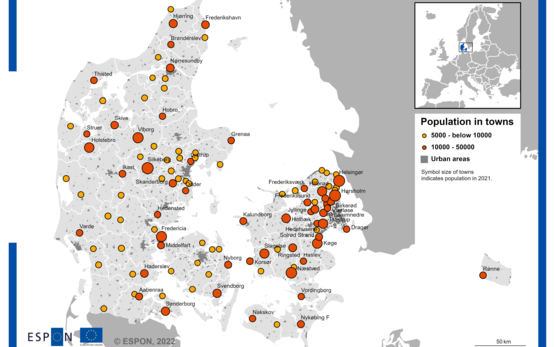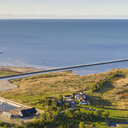Spotlight
-

Denmark, small and medium sized cities
Case Studies | August 25, 2022Looking for new activities and attractions to maintain vibrant town centres and develop appealing urban areas

Looking for new activities and attractions to maintain vibrant town centres and develop appealing urban areas

This report contributes to the Maritime Spatial Planning with two objectives: to undertake an analysis and characterization of the coastal and maritime planning and land-sea interactions from a mul

Article 174 of the TFEU states that: '’the Union shall aim at reducing disparities between the levels of development of the various regions and the backwardness of the least favoured regions.

This project, emanating from the targeted analysis project Maritime Spatial Planning and Land Sea Interactions (MSP-LSI) explores the potential spatial tensions between the deployment of renewable sources of blue energy (energy derived from our seas and oceans), with a particular focus on offshore wind energy, and other (potential) utilisations of the European seas.

This study analyses the implementation of an Integrated Territorial Investment (ITI) targeting small islands of the North Aegean Region in the 2014-2020 programming period, considering observed pat

In a globalised world, gateway cities are important focal points of social and economic development and receive considerable policy attention. Gateway cities are transport hubs, nodes in global financial systems, the location of research institutes in cutting-edge international innovation networks and places attracting international tourism.


Free movement of people is one of the cornerstones of European integration. Increasing mobility of people brings with it both territorial development opportunities and challenges. As a consequence of the global economic crisis migration flows have changed, with territorial impacts on European countries, its regions and cities.

Article 174 of the Treaty on the Functioning of the European Union states that ”the Union shall aim at reducing disparities between the levels of development of the various regions and the backwardness of the least favoured regions” and that ”among the regions concerned, particular attention shall be paid to […] regions which suffer from severe and permanent natural or demographic handicaps such as the northernmost regions with very low population density and island, cross-border and mountain regions.”

The Europe 2020 Strategy aims at responding to the challenges facing Europe, such as the global economic crisis, climate change and energy security by focusing on three growth priorities for ensuring European competitiveness: smart, sustainable and inclusive growth.

Europe’s seas have great potentials for contributing to achieving the objectives of the Europe 2020 Strategy, as regards economic growth and renewable energy. In recent years, the role and importance of maritime potentials has received increasing policy attention, as the idea of Blue Growth has developed.

The Territorial Agenda 2020 addresses maritime activities as essential for territorial cohesion in Europe and establishes that Maritime Spatial Planning (MSP) should be integrated into the existing planning systems. On the same line, the EU Integrated Maritime Policy calls for MSP in order to enable harmonious and sustainable development of a land-sea continuum.

EU Cohesion Policy post-2013 focuses on eleven investment themes where cities and regions need to improve their performance in order to contribute to smart, sustainable and inclusive growth. In seeking better integration to maximise the benefits from investment of public money, all key themes of the future European Structural and Investment Funds (ESIF) need to take account of Europe’s territorial diversity.

Europe is currently affected by two major global challenges. One is the economic and financial crisis. The other is the gradual change of climatic conditions. Like the impacts of the economic and financial crisis, the impacts of climate change caused by natural processes but also human activities, affect and will affect the European territory. However not all regions and cities are and will be affected in the same way. In some places these challenges have little impacts. In other places, they will in the worst case reinforce each other and provide a serious challenge for future growth and employment.

A practical guidance for policymakers and practitioners based on contributions from ESPON projects and the European Commission.

